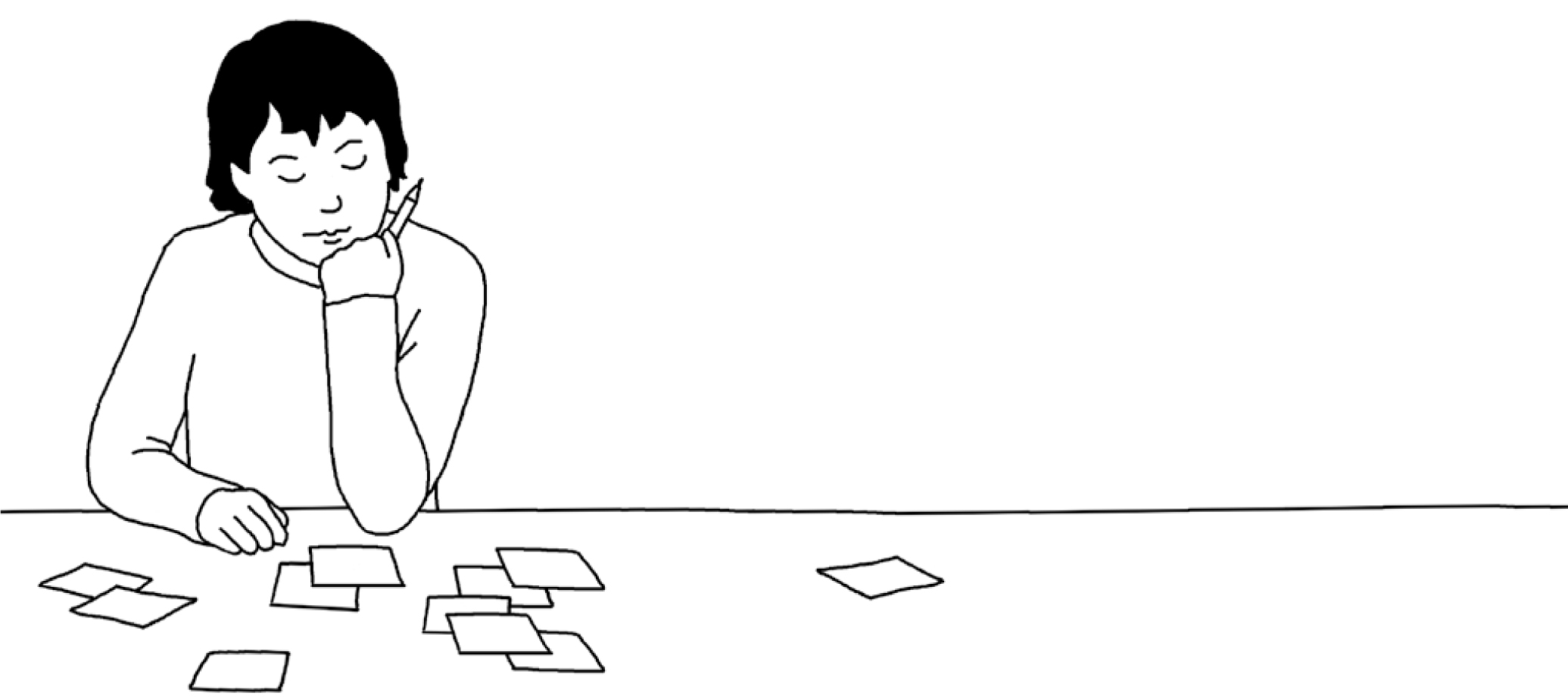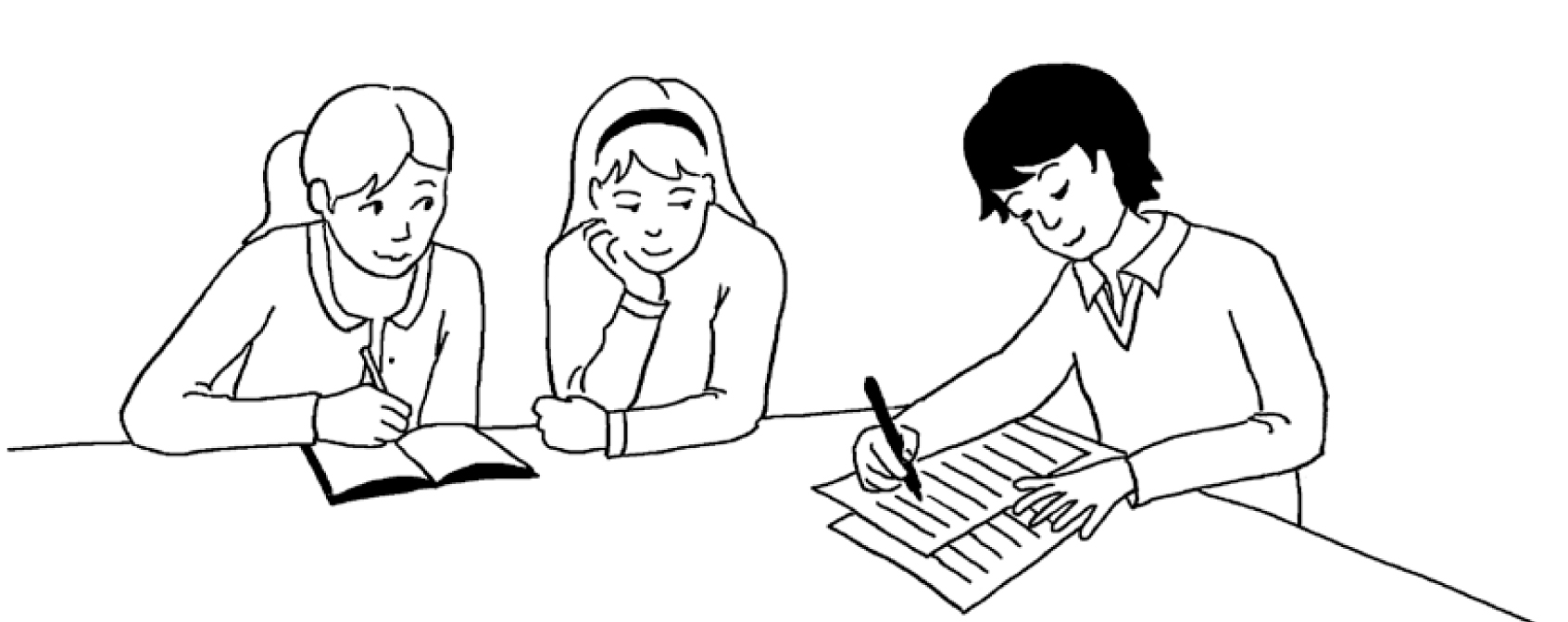Step 1
Find good ideas for your topic!
Possibilities:
- Take a sheet of paper or different small pieces of paper and write on them everything that occurs to you about the topic. You may write the notes in the language of the school, if it is easier for you.
- If you have time, discuss the theme with different people. Write down their ideas.
- Create a mind map or a cluster if you already know these techniques.

Step 2
Arrange the ideas in order, plan the structure of your text

- Look through your notes or small papers. Strike through what you are not able to use.
- Take a sheet of paper and divide it into three parts as shown below:
- introduction/overview
- main body (large field!)
- conclusion/summary
- Write the ideas into the appropriate areas. Consider what is still missing and add it to the text.
- Continue working with this step until you can roughly imagine your text or your story.
- Consider also how you want to design your text (on a sheet of paper, by computer, with illustrations…).
Step 3
Write the first version of your text (draft)
- Write the text!
- Read through your draft, is the structure ok? Do you want to already improve certain words, forms or sentences at this time?
Step 4
Find an effective title and beginning
- Write a good title to catch the interest of the readers or listeners. For example, «Help, I am drowning!» sounds more exciting than «My vacation adventure».
- The same is true for the introductory sentence or paragraph of the text. Here, you can build interest and suspense. The important thing for a story is a surprising, exciting introduction, whereas clear information is required for a factual text.
- It is important to insert good and informative subtitles into longer texts and presentations. They help the readers get an overview.
Step 5
Revise the draft
- This works best with two or three classmates for mutual support and advice in form of a «writing conference». This allows you to help and consult with each other, but you can also revise your text by yourself. The following questions are useful for revising:
- As a whole, is my text understandable and interesting? What do I need to formulate ideas more clearly?
What is good, or not so good? Did I keep to the topic? - Does my text have a clear structure (introduction/overview, main body, conclusion/summary); is the sequence clear? Did I avoid straying from the theme?
- Could I reword the title of my text to generate more interest and excitement, or that would provide clearer information relative to its content?
- Does the text begin with an interesting or informative sentence that generates the desire to read on; how could I improve it?
- Is every sentence understandable and correct in terms of forms and syntax? Mark uncertainties and clarify them with the instructor or someone else who is well versed in composition.
- Did I choose clear and precise words; are there too many repetitions? Is the spelling correct (consult a dictionary!)?
- As a whole, is my text understandable and interesting? What do I need to formulate ideas more clearly?

Step 6
Create the final version of the text
- Make sure that your text is also appealing in terms of the presentation for the readers and exciting for the listeners!
- Also experiment with new forms (design with pictures or as a collage, with a computer, as audio text (audio file) etc.).






